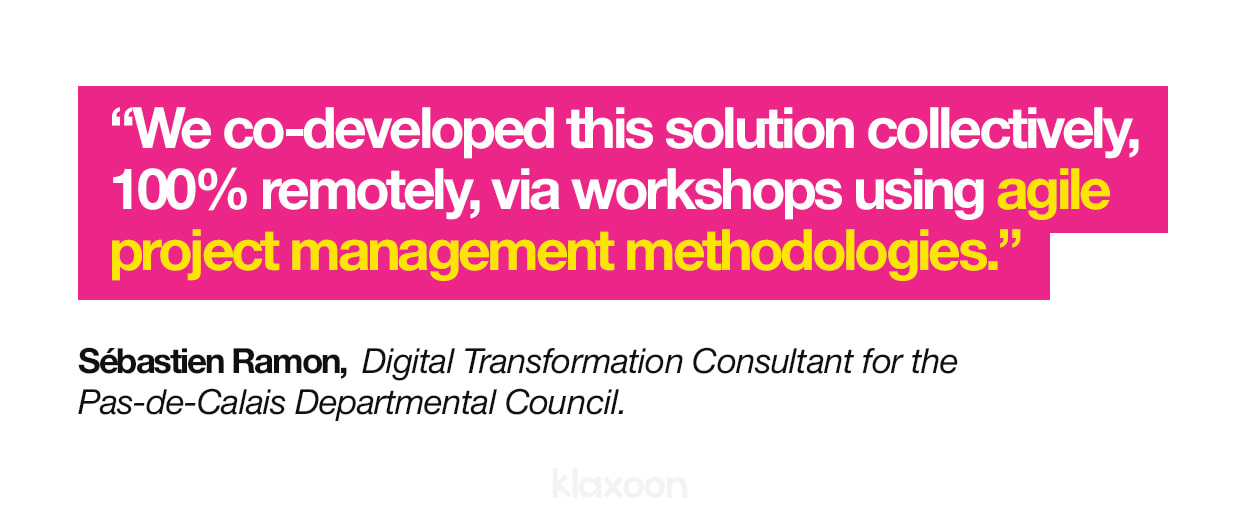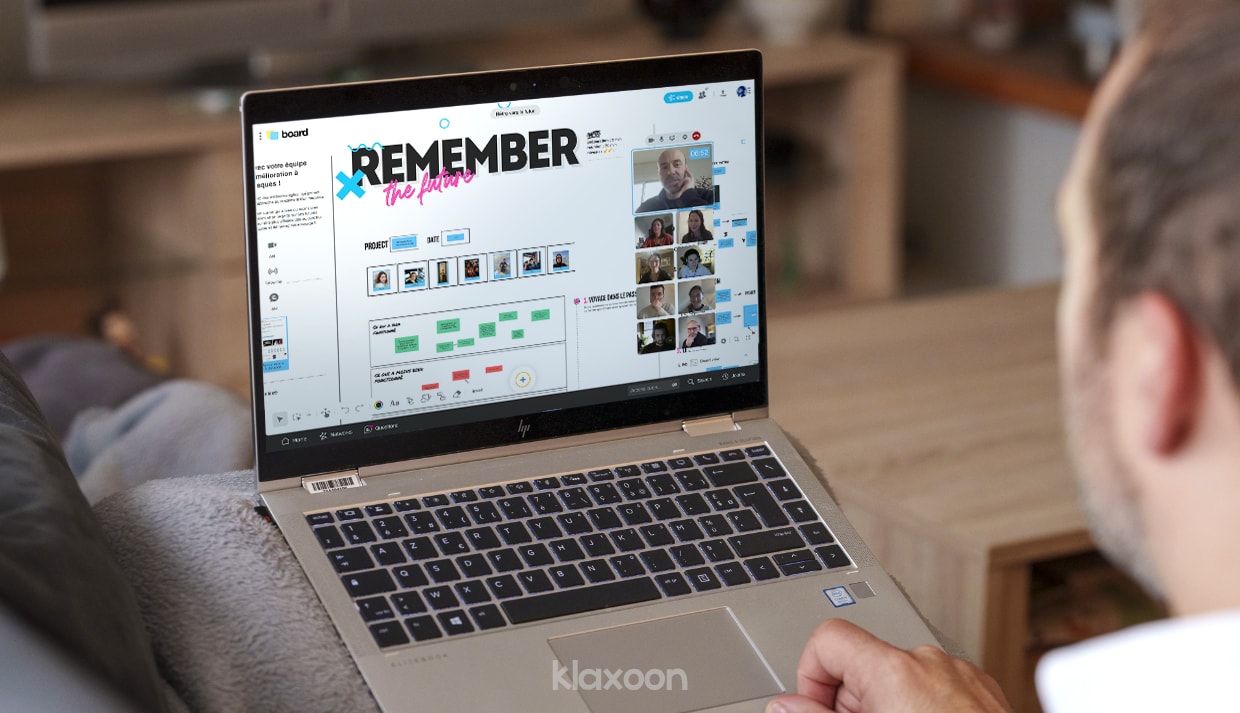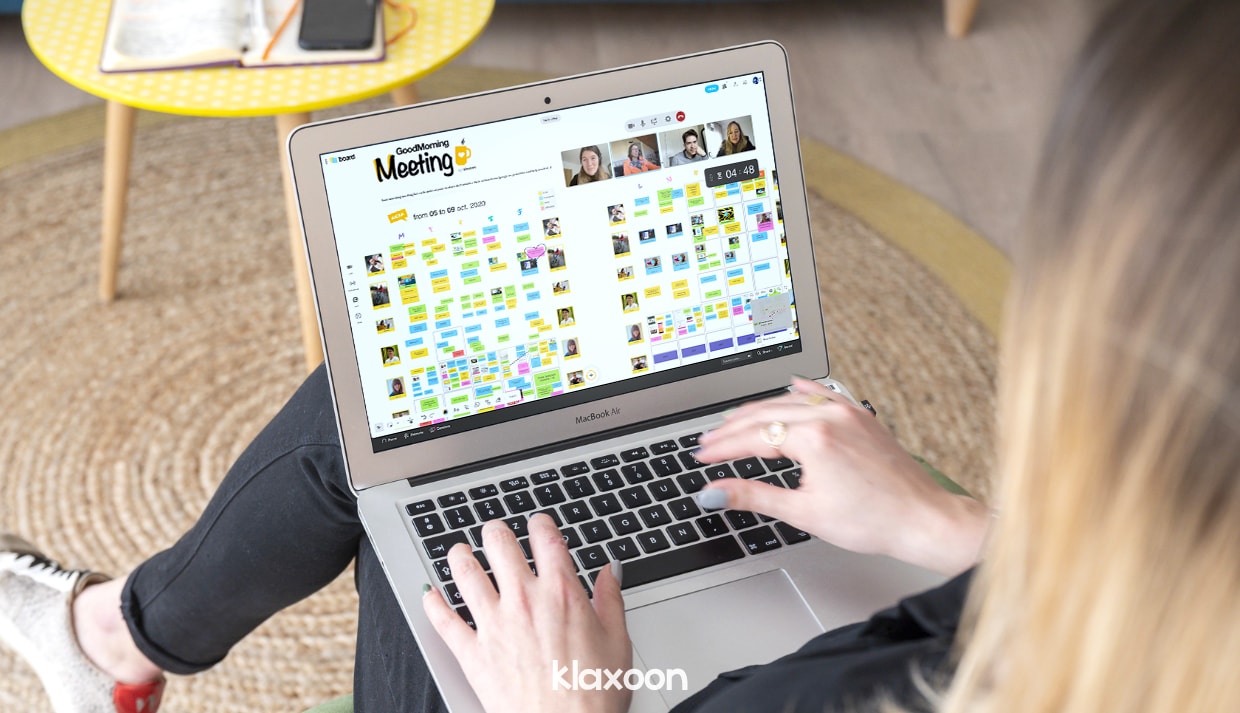How to co-design an outdoor activity platform and app in 18 months, remotely
Published on February 14, 2025
How to co-design an outdoor activity platform and app in 18 months, remotely

Digital Transformation Consultant for the Pas-de-Calais Departmental Council
Sébastien Ramon is a digital transformation consultant for the Pas-de-Calais Departmental Council (France). He is part of the Digital Development Support team. His 3 main missions are: first, to make sure that the department's 6,000 agents equipped with a PC are comfortable with digital tools. Then, to support them in the creation of new digital solutions that will help them in their daily work. And lastly, communicate on all the services that the Direction of Digital Services offers to the department's agents.
Sébastien participated in the development of a platform to promote sports and nature activities in the Pas-de-Calais department: Escapade62.fr. All this was done using Klaxoon’s Board. This required collaboration both in hybrid mode and asynchronously. Learn about the steps of this co-design, made possible thanks to Klaxoon.
The Department needed to create a digital platform to allow its tourists and residents to discover outdoor sports and nature activities that they can enjoy in many places of the region. The specifications were extensive: in particular, the aim was to create an interactive experience for the user, while also working with England on the tourism aspect, as part of the European Interreg project.
The project started in February 2021, in co-development with the 5 administrations of the community (the Pas-de-Calais department) and 3 external partners, such as the departmental Olympic committee, through workshop sessions with 10 to 15 participants each time.
Given the pandemic at that time, it was impossible to meet face-to-face in a room with the various stakeholders involved in the design of the project. Therefore, an online medium encouraging the participation of each stakeholder was required, in order to work and move forward together despite the restrictions.
While he was used to leading workshops with traditional sticky notes and meeting room boards, Sébastien, like many of us, had to turn to digital tools during the Covid crisis in 2020. With his team, he studied several solutions, and they settled on Klaxoon.
Why? "First of all, because it's more than just a digital whiteboard. It also allows you to do Quizzes, Adventures, Polls, Sessions that combine a whole bunch of activities. And also because it’s a local French solution, which is already used by most of the departmental councils here (editor's note: more than 40), so it's pretty well established. And then, we were ourselves convinced that it was the most suitable tool compared to the other tools we had tested before.”
Sébastien chose Board to conduct the project. He organized several remote workshops, each time with about 15 participants from the department and partner organizations. Starting from scratch, it has taken just 18 months for the project to get the finalized platform live!


To build Escapade62.fr, the design team needed to fully understand users' needs, to imagine themselves in the shoes of future users and order offer them the best experience when they connect.


The team goes directly to the project’s Board, where they have an overview of each step.


“Remember the Future” is an opportunity to reflect as a team and ask yourselves what will guide your decision making.
It's not insignificant when Sebastien Ramon explains that the project was carried out from A to Z in Board. It didn't stop at the project co-development workshops:
One particular thing about what we did with the team working on Klaxoon, is that it's what we used afterward to contact publishers.
Sébastien and his team shared the Board with the two competing publishers, so that they could review the full project.
Once the publishers responded, the team created a new Board with the criteria for evaluating those publishers. This was done asynchronously. “We assessed them together,” continues Sebastien. “We put in a whole bunch of information about what the publishers had done before, what they were able to commit to, and what they weren't able to commit to. And then, we all voted.”
In Board, Voting Questions are here to allow the team to vote for a publisher. Having all of these criteria laid out in front of them, right on the Board, helped the team with their voting. It allowed them to choose the vendor that met the most criteria, while anticipating the missing criteria to make sure they covered all the project's needs.
We wouldn't have realized these things if we hadn't conducted this workshop.
The main benefits Sébastien Ramon noted when using Klaxoon in this way are “the way of successfully bringing people together, unifying them, making them work together, making them ask questions, in other words, making them creative through the tool.”
And as the consultant highlights:
Klaxoon also allows us to keep the value that was produced, and to be able to reuse it at the next workshop. You don't lose the content, so you can build on what already exists. And that's really interesting.
Another significant benefit is the ease of working remotely with Board. "The entire team never physically met with each other until the app was delivered, and yet that wasn't a constraint at all. On the contrary, it reduced travel time for some of our colleagues working from other departments, or external partners.”
Beyond project management, Sébastien very quickly embraced Klaxoon for the team management aspect. Indeed, his team's role is to create cohesion, synchronization, and to be able to make assessments. Here are his top 3 methods for team management (3 methods you can find in our template library):


With the GoodMorning meeting, the team quickly gets in sync to start the day in an efficient way.
Unlock your teamwork potential